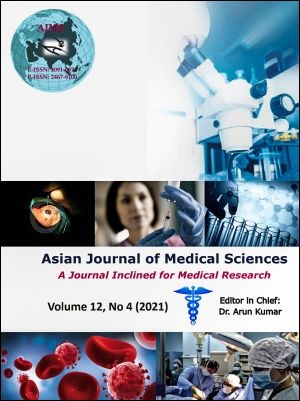Effects of statin on atherosclerosis of ascending aorta in patients undergoing coronary artery bypass grafting
Keywords:
Lipoproteins, atherosclerosis, statins, rosuvastatinAbstract
Background: Atherosclerosis is a chronic inflammatory process characterized by thickening and hardening of the vascular walls. In many studies, the effect of statin therapy on atherosclerosis has been investigated. The effect of statins on slowing the atherosclerotic process and its clinical results have been revealed.
Aims and Objective: The aims of the study was to investigate the protection of statin in the ascending aorta.
Materials and Methods: The current study examined the presence of atherosclerosis by means of histopathologic evaluation of the tissues which sampled from ascending aorta during the CABG. These two groups of patients were evaluated in terms of the laboratory tests and the presence of atherosclerosis.
Results: There were 43 male (89.6%), and 5 female (10.4%) patients between 39 and 81 years of age were included in the study. There were no statistically significant difference between the patients’ preoperative cardiovascular risk assessments. It was observed that the LDL value of the group using statin was 56 ± 13.66 mg / dl, and the group that did not use was 57 ± 12.97 mg / dl. There were 6 patients (30%) in the statin group and 8 patients (28.6%) in the other group that did not use statin. There were no statistically significant difference in term of atherosclerosis between two groups.
Conclusion: We evaluated the atherosclerosis of ascending aorta in patients using and not using statin. Even though there were no difference in atherosclerosis in large-scale vascular structures with higher flow rates such as ascending aorta, we think that statin reduces possible aortic pathologies by stabilizing the atherosclerotic plaque and reducing the shear stress.
Downloads
Downloads
Published
How to Cite
Issue
Section
License
Authors who publish with this journal agree to the following terms:
- The journal holds copyright and publishes the work under a Creative Commons CC-BY-NC license that permits use, distribution and reprduction in any medium, provided the original work is properly cited and is not used for commercial purposes. The journal should be recognised as the original publisher of this work.
- Authors are able to enter into separate, additional contractual arrangements for the non-exclusive distribution of the journal's published version of the work (e.g., post it to an institutional repository or publish it in a book), with an acknowledgement of its initial publication in this journal.
- Authors are permitted and encouraged to post their work online (e.g., in institutional repositories or on their website) prior to and during the submission process, as it can lead to productive exchanges, as well as earlier and greater citation of published work (See The Effect of Open Access).




